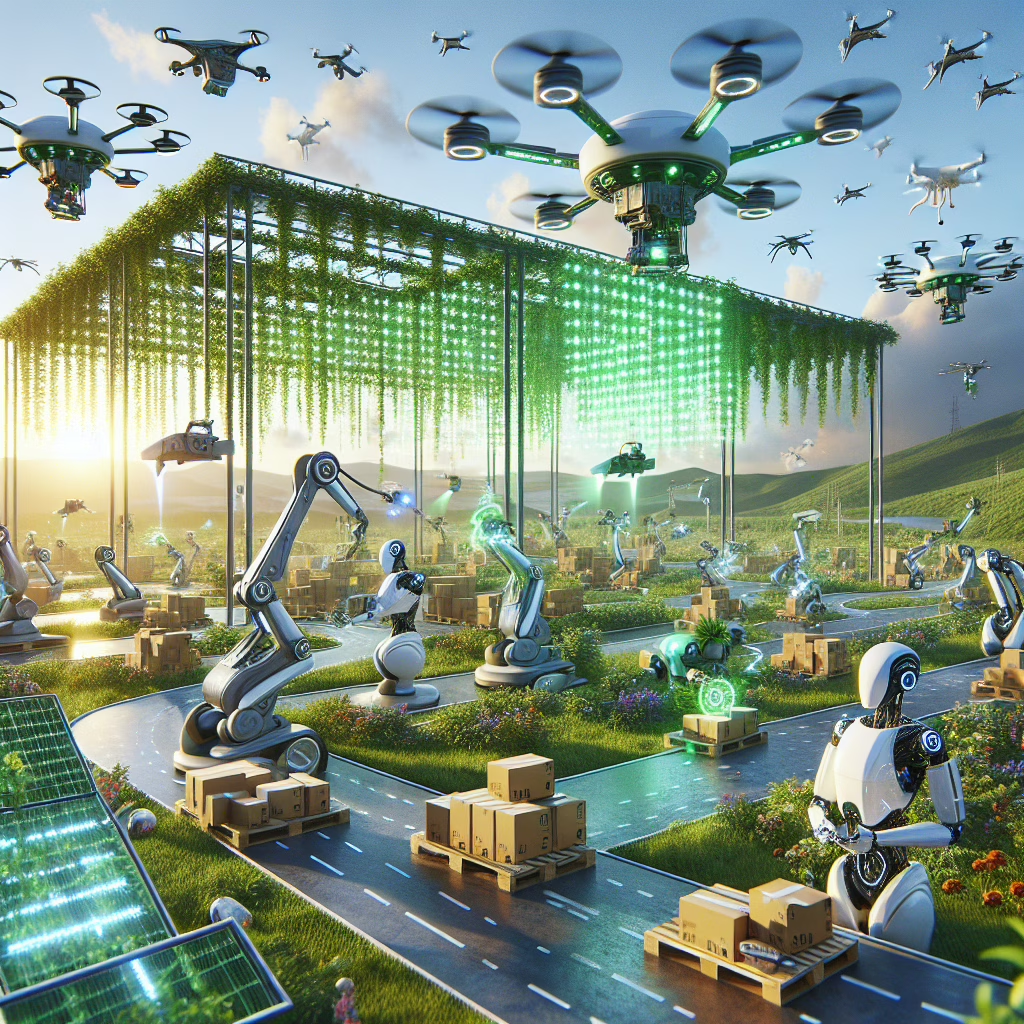In the grand theater of modern industry, where supply chains twist and turn like a well-rehearsed ballet, a new star has taken center stage: artificial intelligence (AI). As we embark on our journey through 2025, it’s clear that AI isn’t just a buzzword; it’s the fairy godmother we didn’t know we needed to save our supply chains from the looming climate crisis. Manufacturers everywhere are betting big that AI will help them dance gracefully through the challenges posed by climate change.
How AI is Reshaping Supply Chains in 2025
Imagine this: a world where supply chains operate with the precision of a Swiss watch. That’s the vision that manufacturers have as they embrace AI technologies. From predicting demand to optimizing routes, AI’s capabilities are like having a crystal ball—only much more reliable and less prone to displaying cat videos at inappropriate times.
With the climate crisis knocking on everyone’s door, companies are feeling the heat (and not just because of global warming). They’re looking for innovative solutions to make their operations more sustainable. Enter AI, which helps companies track resources, reduce waste, and even manage energy consumption more efficiently than ever before. This shift is essential for a healthier planet and a more efficient economy.
The Smart Supply Chain: Your New Best Friend
Let’s dive into some of the magical ways AI is transforming supply chains:
- Predictive Analytics: Think of predictive analytics as your supply chain’s psychic advisor. It analyzes vast amounts of data to forecast trends and demand fluctuations. This means fewer overstocked warehouses filled with items no one wants—goodbye, unwanted holiday sweaters!
- Real-Time Tracking: With AI-powered tracking systems, manufacturers can monitor their products from factory floor to front door in real-time. If only we had this kind of technology for locating lost socks!
- Sustainability Insights: AI algorithms can sift through data to identify eco-friendly practices that reduce carbon footprints. Who knew that being green could also be efficient? It’s like getting a hug from Mother Nature while saving money.
- Risk Management: Climate-related disruptions are becoming more common. AI helps companies anticipate risks and respond swiftly, ensuring that supply chains remain resilient even when Mother Nature throws a tantrum. This proactive approach is critical in minimizing losses and ensuring continuity.
With these advantages, manufacturers are not just hoping for a miracle; they’re actively creating one. By leveraging AI, they can navigate the complexities of supply chains while doing their part to combat climate change. The integration of technology and sustainability principles is paving the way for a brighter, greener future.
The Economic Benefits of Going Green with AI
But wait, there’s more! The economic benefits of integrating AI into supply chains are too good to overlook. In an era where sustainability is increasingly linked to profitability, businesses can enjoy reduced operational costs while enhancing their brand image as environmentally conscious entities.
For example, companies that adopt smart logistics powered by AI often see significant reductions in fuel costs and transportation time. This efficiency not only decreases environmental impact but also boosts bottom lines—it’s like finding out that your favorite dessert is also good for you. Who wouldn’t want that?
Furthermore, consumers today prefer brands that demonstrate responsibility toward the environment. By utilizing AI technologies to optimize their supply chains and reduce waste, manufacturers can appeal to eco-minded customers and boost sales in this competitive market. This shift aligns profitability with purpose, creating a win-win scenario.
The Road Ahead: Challenges and Opportunities
Of course, it’s not all sunshine and rainbows when it comes to merging AI with supply chain management. Companies face challenges such as data privacy concerns and the need for substantial investment in technology. But isn’t overcoming obstacles part of what makes life interesting? Think of it as an exhilarating rollercoaster ride—thrilling but requiring some bravery!
The key lies in collaboration between tech developers and manufacturers. By working together, they can create tailored solutions that not only enhance efficiency but also address pressing environmental issues, thus ensuring long-term success.
A Bright Future Awaits
As we move deeper into 2025, it becomes increasingly clear that AI holds immense potential for revolutionizing supply chains while tackling climate change head-on. Manufacturers are optimistic about this partnership—a bit like a hopeful romantic looking for love in all the right places.
The ultimate goal? A sustainable future where products flow seamlessly through eco-friendly channels without leaving behind a trail of carbon footprints or outdated holiday sweaters. So let’s cheer on these innovators as they harness technology for good, paving the way for a better tomorrow.
Now it’s your turn! What do you think about the role of AI in transforming supply chains amid the climate crisis? Share your thoughts below!
Special thanks to Wired for inspiring this article! For more insights on the intersection of technology and sustainability, check out our other posts like The Slowdown at Ports and Strategy Bitcoin Buying Spree.

